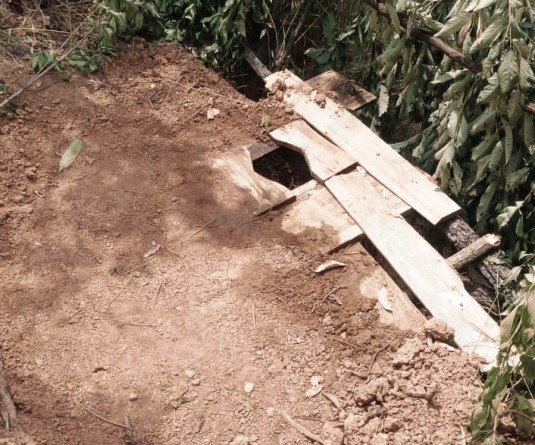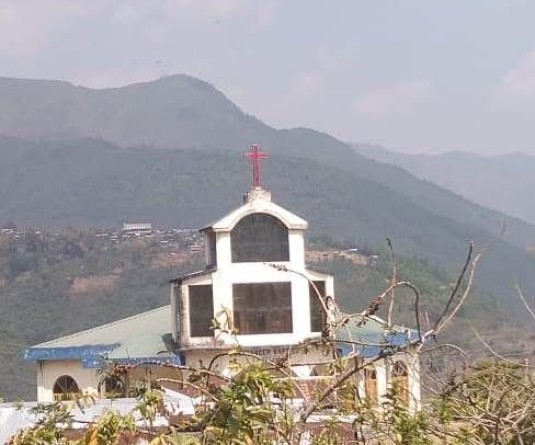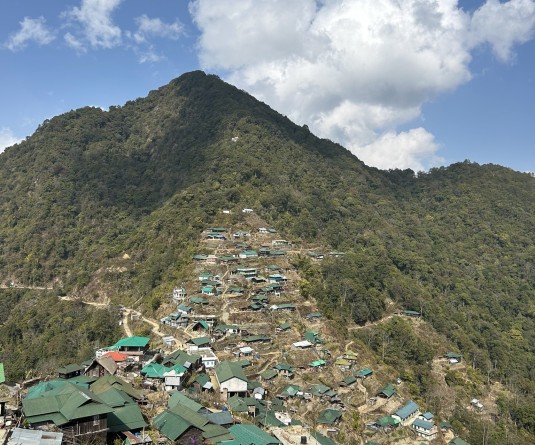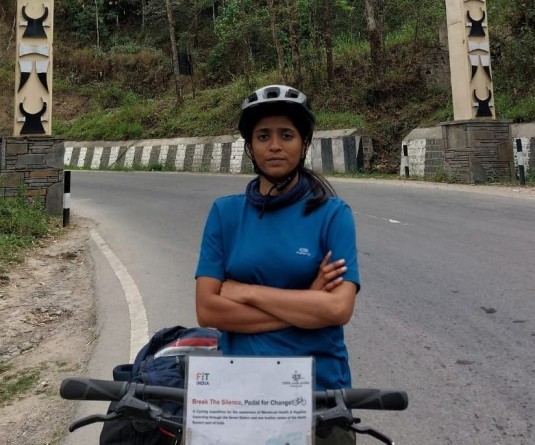1

Easterine Kire
Surrounded by close friends and acquaintances, Hans Ragnar Mathisen launched his latest map on 1st July 2019, which was also his 74rth birthday. Artist Hans Ragnar is a map-maker as well. He has been working on maps from the seventies. Born in Northern Norway, he says in his own words, ‘ I was born July 1st 1945 as one of a pair of twins at the hospital in Narvik, Sapmi, Norway or rather the ruins of a town that had been targeted for bombs during WWII. Originally, I come from a small coastal Sami village Searvegieddi in Deanudat, and the dreaded TB disease also infected me. My grandfather and all my three uncles died of it prematurely. Nils Anders died first 20 years old, then Samuel died the same year I was born at the age of 25, then Amund who ‘passed on’ the disease (without being aware of it, of course) to me, and I was hospitalised for 9 years, 7 ½ in Romsa/Tromsø.’ Hans Ragnar likes to use his Naga name, Keviselie, which he was given when he visited Kohima and Khonoma in 1977 having received a Restricted Area Permit for three days. The day on which he arrived was an auspicious date for Nagas, 14th August, and he was named Keviselie by his hostess, ‘the one who meets with a good day.’
Writer Jane George, called the map-making art of Hans Ragnar Mathisen reclaiming the land through art. Mathisen himself calls it ‘a peaceful appropriation’ of his peoples’ land, traditions and culture. George quoted Mathisen as saying, ‘After one thousand years, we still have our language and culture. It shows Sami are very strong, but not stupid, because if we were stupid, we would fight with weapons and lose.’ Mathisen has managed to ‘enrich Sami language and culture through his series of maps that depict the world, as seen by Sami eyes.
I must quote Jane George further:
‘It’s a world that’s viewed from the top of Sami homeland, instead of from the south of Norway. Sapmi is a territory without national borders, whose towns, rivers and mountains are identified by their original Sami names. Mathisen’s maps – which he draws by hand, in pencil and ink – also incorporate animals, plants, handicrafts, legends, ancient Sami language, and symbols. They’re painstakingly accurate, as well as colourful and whimsical. His maps are made to inform, please the eye, and catch attention, so if you look closely, you might find a joke written in tiny script around the border, or you can try to decipher a story written in mysterious mirror writing. Another map includes a small drawing of the moon with its geographical features, usually identified in Latin, that Mathisen re-named in Sami.’
The first map caused a sensation, especially as it was a politically vulnerable period in the Norwegian dominated society of 1975. Twenty years later, Mathisen produced the Sami atlas, with maps presenting the geography of Sami territory and much more, which is now used in Sami-language schools. The map shows clan distributions, sacred places, and traditional reindeer grazing grounds. He has also made ‘maps of the circumpolar world displaying all the names of the indigenous peoples and their homelands-in Sami. The map project had the aim of reclaiming ‘the Sami people’s rightful place in history.’ Mathisen was also concerned about the fact that in the past people had devalued and ‘demonized’ the Sami by ‘portraying them as trolls,’ characters from Norwegian folklore. Sami persecution happened in 1600s when Sami shamans who refused to part with their drums were burned to death. ‘Anti-Sami feeling is deeply rooted,’ he says.
In all his maps, Mathisen adds very elaborate traditional designs of the Sami drum, or rocks, wooden spoons and cups and other distinctly Sami artefacts.
Something very interesting he had to say was the concept that the reindeer herders looked at the landscape in ways different from the coastal Sami; they look at the terrain, look for pasture etc and while the coastal Sami were more interested in details of the land, the reindeer herding Samis read landscape by taking in the breadth of it and remembering which areas had good pasturing grounds for their flocks.
I will let him explain this in his own words: ‘The reindeer herders look at the land more like a map, a mental map, since the place-names they use are exactdescriptions of the area/place the name represent, so in hearing the names for a certain area, they can see the quality, extent, height, with or without vegetation, etc., in contrast to the coastal Sámi who would call a mountain “várri”, whereas mountain users’ names would describe it more correctly/effectively, whether or not it is a safe place to pass, etc These are names for mountain (some of which are also used by Coastal Sámi):
Mountain tops: -várri, gáisi, gáisa, čohkka, várdu (smaller hill from which there is a good view)
Mountains with names according to likeness: njunni (nose) oalgi (shoulder), beallji (ear)
These are names to give you an idea of the rich variety needed for people who were totally dependent on nature
Places according to quality: vággi (V-formed valley) ,vuopmi (valley with forest), ávči (canyon), rášša (flat area in the mountains with no vegetation at all, only pebbles and small stones.
Rivers: Johka (brook and small river), eatnu/deatnu (large river), gorži (waterfall), luobbal (widening part of a river, like a long lake), Jávri = lake, láddu= pond,
Among mountain Sámi, an area can have the same name as prefix, like Gálgo-jávri, Gálgo- johka, Gálgo-vuopmi, Gálgo-gáisa, etc.
Among the Coastal Sámi names are more often related to humans or human activities, and animals, Goaskinvárri (Eagle mountain), loddebákti (bird cliff) Skárfa-geađgi (where the large black seabird(s) use to sit, Njoammil-vuovdi (hare forest), Máhtte-luokta (Bay of Mathis), Njuorjo-vuotna (seal vuotna/fjord) and so on.’
What is Mathisen’s real achievement is this: Maps become the languages that carry the land. The indigenous place names have been revived and will live on because of his projects. The maps can be appreciated as art as they are very colourful and aesthetically designed. At the same time, their political agenda cannot be overlooked. At the heart of it, the lesson that can be learned is the connection the native place names give to its human occupants. To hear the name of a place in one’s native language gives it a completely different identity. There is familiarity because the names are in the language of the heart. There is a sense of belonging created by the association that the native languages create. We all live through periods of ‘hjemlengsel’ longing-for-home, a hankering to travel home to the place where the language is not a second language. Yet when the place-names are in another language, the connection would be interfered with (my theory).
Young History teacher Vilto said: ‘In my area, every mountain has a name.’ It is that factor that makes home, home to us. We know those names; we recognise those names and connect with those place-names. And we reclaim them each time we identify them by their native names.
Maps are the languages that carry the land. Map-making using indigenous methods is vitally important for this generation. Quite some years ago, a researcher said that he had discovered that it was hunters who had the best knowledge of the land. They were the ones who wandered much further than any other members of the village. They sometimes named unnamed places in the deep forests or they know of the places by reputation, and were fairly sure they had stumbled upon those places because they used the descriptions given of the places.
For the Sami map maker, a big part of the work was completed by another person before he began drawing his maps. Mathisen explained that an earlier researcher had written down very many of the Sami place names alongside their Norwegian names. This greatly helped him. Mathisen’s task was to insert the names onto his beautiful maps. In our case, we have to do both. We have to start from scratch. List all the native names and their geographical locations. Commission artists to draw these maps and authorise schools to use them so that our young can learn their cultural geography and bond with their landscape from a young age. This is how the reclaiming of the land can go on for centuries.





